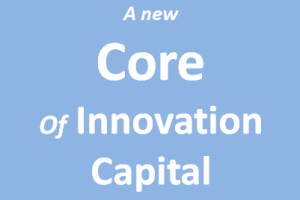My definition of what makes up innovation capital:
“Innovation capital is the sum of all that promotes the development and changes required for achieving innovation outcomes, within one organization or its broader networked environment, for marketplace advantage.”
The capital of innovation has many moving parts.
“These are made up of the resources, processes, knowledge, and capabilities, that are constantly evolving and highly dynamic to build greater innovating capacity.”
“These build upon the capabilities of ‘sensing, seizing and transforming’ to build new capital that focuses more upon the dynamics within innovation, that provide the true value creation in successful outcomes in the final product, services or executing within business models.”
We need to value both “stocks and flows” in equal attention to build innovation capital.
The ‘stock’ of innovation capital can render different productive value outcomes, is a bundle of the firm’s resources/assets and holds the renewal capabilities and they possess attributes that make it a “strategic asset.”
Innovation capital is made up of many different assets that are often context-specific and interconnected, and this makes it hard to build without taking a broader, more holistic approach to developing your capabilities, capacities, and competencies to innovate. You ‘map’ and align these to fit your strategic goals and aspirations; these provide the basis for the “flows.”
Each company needs to build its own unique capital stock.



